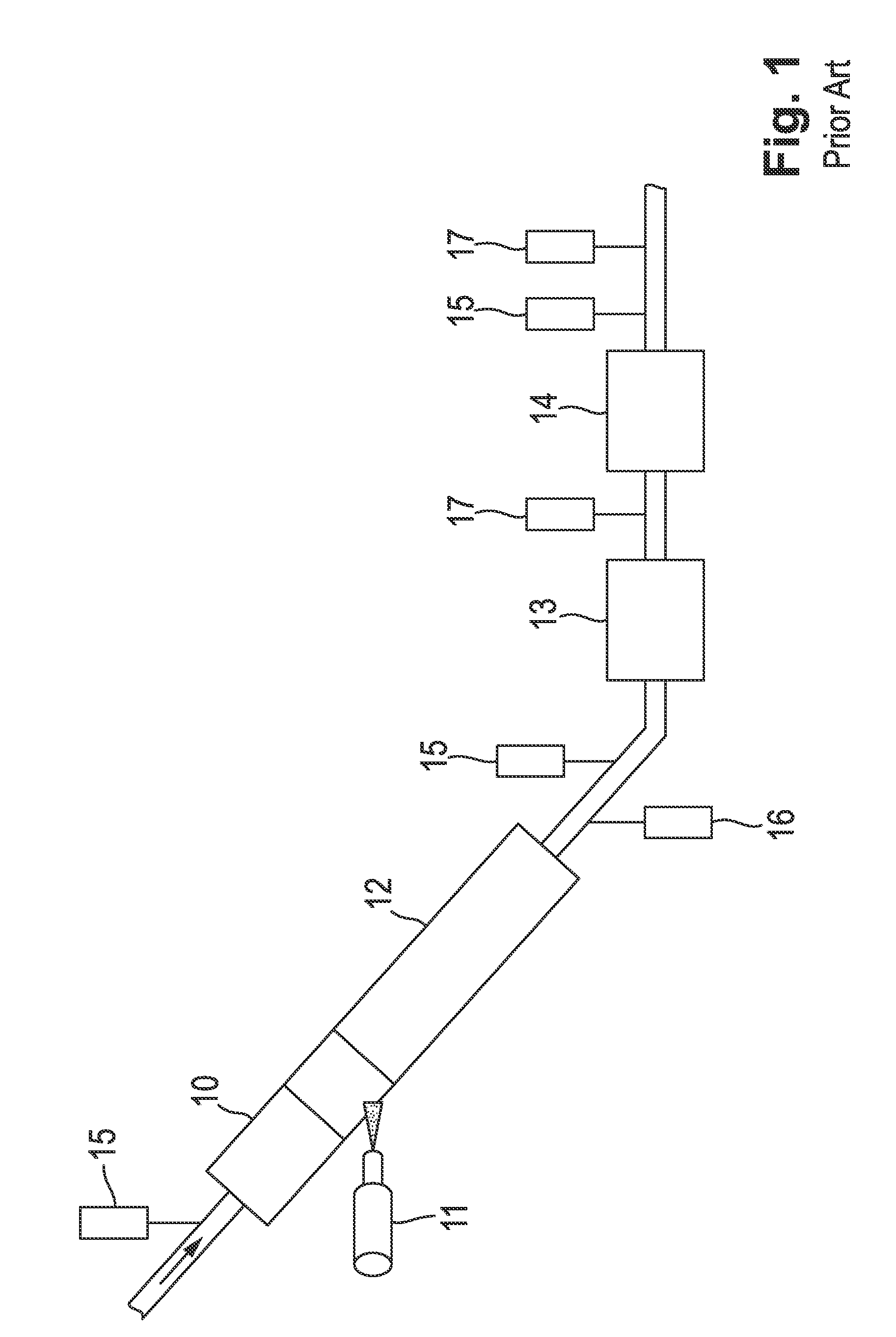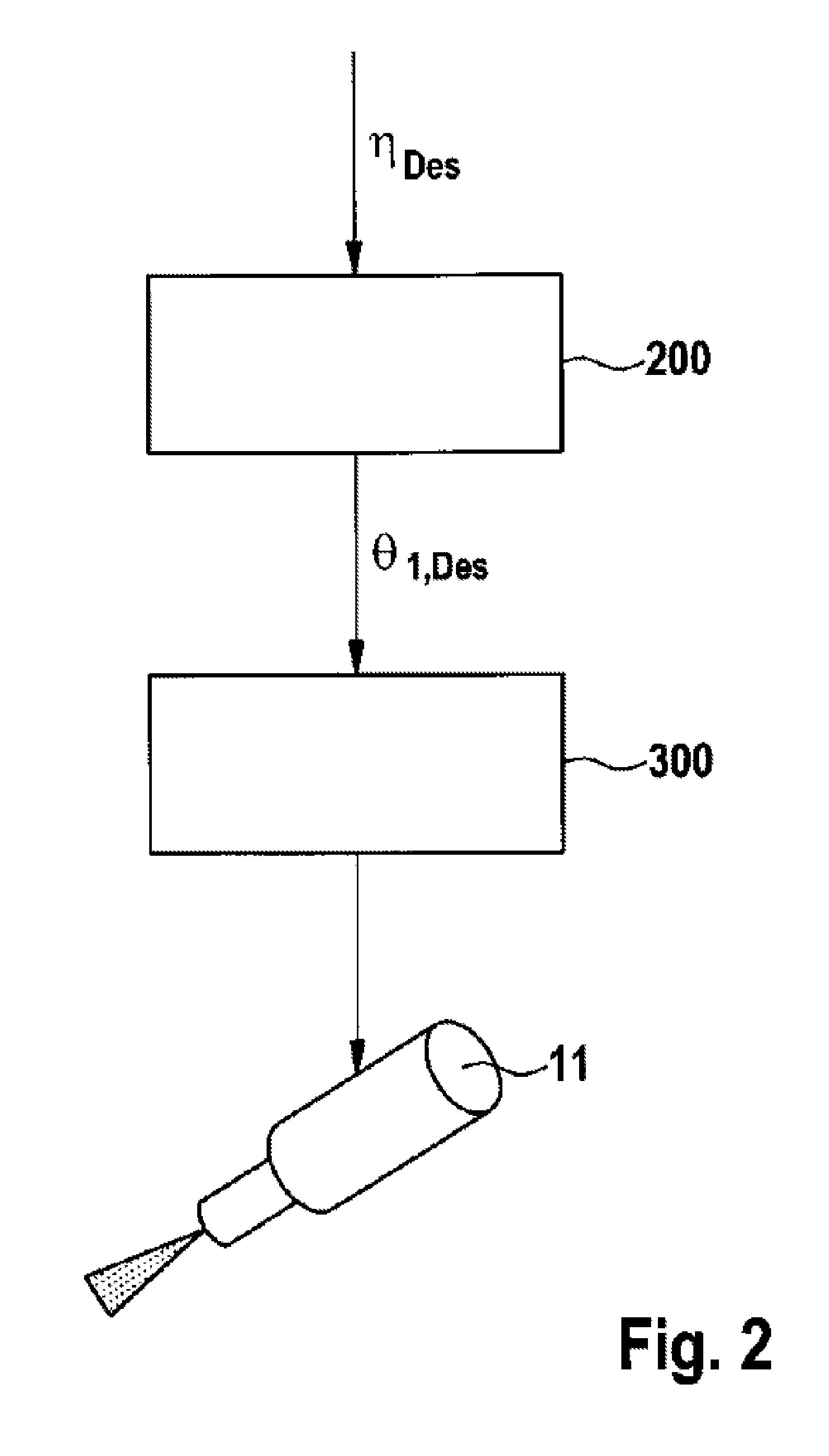Method for operating an exhaust gas aftertreatment system with at least one first SCR device and at least one second SCR device
a technology of exhaust gas aftertreatment and scr device, which is applied in the direction of separation processes, arsenic compounds, silicon compounds, etc., can solve the problems of unreliable and relatively complex process control of said system, and achieve the effect of convenient us
- Summary
- Abstract
- Description
- Claims
- Application Information
AI Technical Summary
Benefits of technology
Problems solved by technology
Method used
Image
Examples
Embodiment Construction
[0023]FIG. 1 shows an exemplary arrangement of the components in the exhaust system of an internal combustion machine with two SCR devices. The method according to the invention can be used advantageously with such an exhaust aftertreatment system. The method can, however, also be used with other exhaust aftertreatment systems comprising two or more SCR devices, e.g. two SCR catalyzers connected in series. In said configuration of the exhaust aftertreatment system a diesel oxidation catalyzer (DOC) 10 is provided first in the exhaust gas flow direction. This is followed in the exhaust gas flow direction by a dosing device 11 for the reactant of the SCR devices. A particle filter 12 with an SCR coating (SCRF) is provided as the first SCR device. An SCR catalyzer 13 is disposed after the SCRF 12. Finally another catalyzer, in this case a clean-up-cat (CuC) 14, is provided in order to complete the exhaust gas aftertreatment. The arrow gives the flow direction of the exhaust gas. Furthe...
PUM
| Property | Measurement | Unit |
|---|---|---|
| temperatures | aaaaa | aaaaa |
| mass flow | aaaaa | aaaaa |
| degree of charge | aaaaa | aaaaa |
Abstract
Description
Claims
Application Information
 Login to View More
Login to View More - R&D
- Intellectual Property
- Life Sciences
- Materials
- Tech Scout
- Unparalleled Data Quality
- Higher Quality Content
- 60% Fewer Hallucinations
Browse by: Latest US Patents, China's latest patents, Technical Efficacy Thesaurus, Application Domain, Technology Topic, Popular Technical Reports.
© 2025 PatSnap. All rights reserved.Legal|Privacy policy|Modern Slavery Act Transparency Statement|Sitemap|About US| Contact US: help@patsnap.com



